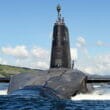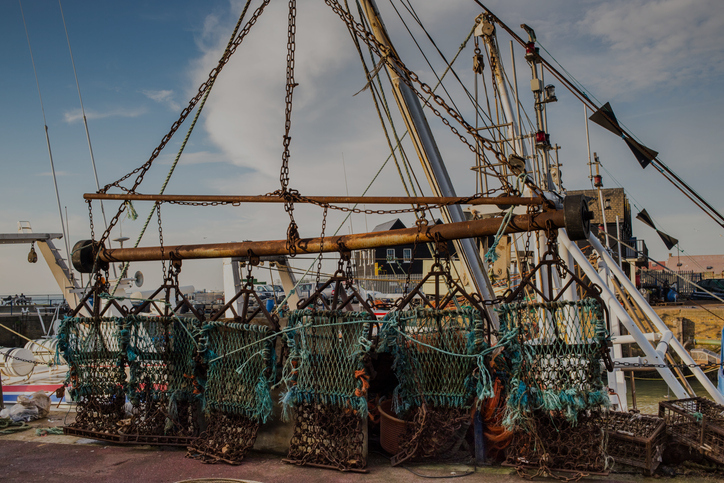Evidence of scallop dredging has been found inside an Orkney marine protected area, prompting calls for the Scottish Government to “urgently deliver” on its promise to better regulate coastal waters.
Campaign group Open Seas said it found “clear evidence of dredging” after visiting the small island of Papa Westray, to investigate reports by locals that a scallop dredger had been working close to shore.
Dredges are heavy-duty metal framed nets which are pulled over the seabed but they damage species and the ecosystem.
Open Seas has urged the Scottish Government to do more to protect vital habitats in an area that was designated for protection eight years ago.
The Scottish Government said it is “currently developing fisheries management measures” for the Papa Westray marine protected area (MPA).
In 2014, the seas around most of the island was designated as a MPA to safeguard the feeding grounds of black guillemots, and they are home to vulnerable species like spurdog sharks.
There are currently no restrictions on dredging inside the MPA, however, despite the fact it was found to be in need of protection nearly a decade ago.
Open Seas pointed out that when a MPA is designated, this decision actually has no impact on fishing activity inside the area. Until additional laws are passed to regulate fishing within the MPA, activities can continue as before, Open Seas said, “despite being shown by government scientists to be incompatible” with the site’s conservation objectives.
Researchers with Open Seas undertook a trip to Papa Westray in June following “multiple reports and photographic evidence” sent by islanders capturing the presence of scallop dredging vessels south of the Holm of Papay.
“We found clear evidence of scallop dredging – parallel lines of artificial nature running across the seabed, together with broken shells including scallops, razor clams, and other species within the MPA boundary, with dredging falling inside the proposed management action area that would prohibit the use of mobile gear, including scallop dredging,” Open Seas said in a report.
The campaign group said that scallop dredging is not practiced by the Papay community, and likely “mostly done in the area by nomadic boats originating from mainland Scotland”.
Open Seas’ research officer Anna Safryghin told The Ferret: “We documented evidence of nomadic scallop dredging inside the Papa Westray marine protected area, and in areas that were identified as deserving protection eight years ago, but for which still no management is in place.
We documented evidence of nomadic scallop dredging inside the Papa Westray marine protected area, and in areas that were identified as deserving protection eight years ago, but for which still no management is in place.
Open Seas’ research officer, Anna Safryghin
“The scientific advice has been clear for many years – the task now is to implement effective management for the long-term resilience of our seas.”
A spokesperson for the Scottish Government said it is “developing fisheries management measures” for MPAs where these are not already in place, including for Papa Westray.
“The proposed management measures will be based on advice from our statutory nature advisor NatureScot and will focus on ensuring the site conservation objectives can be met. The use of scallop dredges is not restricted within the (Papa Westray) MPA,” they said.
“However, we take the enforcement of fisheries management measures for MPAs extremely seriously, investigate all allegations of illegal activity thoroughly and act to enforce the law and rules governing fishing where illegality has been found to have taken place.”
The government spokesperson added that the “vast majority of fishing vessels in Scottish waters adhere to the law” and that it has seen “high voluntary take up of remote electronic monitoring (REM) technology” — in particular amongst pelagic and scallop dredging vessels.
REM involves the use of imagery, sensors, and GPS on vessels to monitor their fishing operations and movements.
Hannah Fennell, head of Orkney Fisheries Association, said the fishing sector’s “commitment to responsible practices” and collaboration with government bodies has been “integral to ongoing efforts” to protect marine ecosystems.
She said her organisation had worked with the government for years to identify MPAs and more recently, priority marine features, which range from flame shell beds in coastal waters, to cold-water coral reefs of deeper seas, and species such as minke whale and basking shark.
“Almost 40 per cent of Scotland’s seas are now designated and the process of putting appropriate management measures in place is underway. As a sector we must operate within the framework of existing regulations, and are committed to continuing to work with the government on conservation matters,” Fennell added.
Photo credit: iStock and CBCK-Christine














